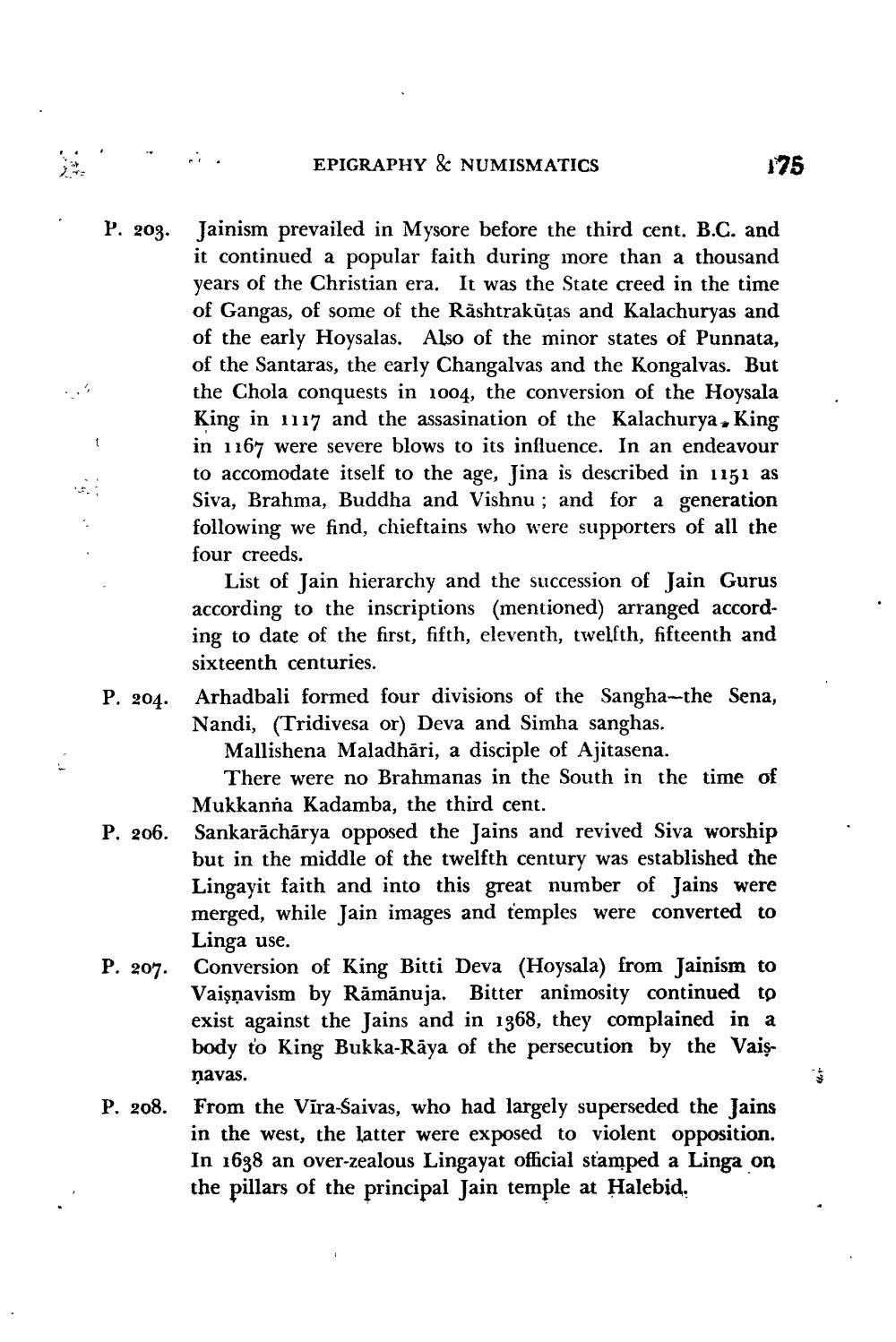________________
EPIGRAPHY & NUMISMATICS
175
P. 203.
P. 204.
Jainism prevailed in Mysore before the third cent. B.C. and it continued a popular faith during more than a thousand years of the Christian era. It was the State creed in the time of Gangas, of some of the Rashtrakūtas and Kalachuryas and of the early Hoysalas. Also of the minor states of Punnata, of the Santaras, the early Changalvas and the Kongalvas. But the Chola conquests in 1004, the conversion of the Hoysala King in 1117 and the assasination of the Kalachurya, King in 1167 were severe blows to its influence. In an endeavour to accomodate itself to the age, Jina is described in 1151 as Siva, Brahma, Buddha and Vishnu; and for a generation following we find, chieftains who were supporters of all the four creeds.
List of Jain hierarchy and the succession of Jain Gurus according to the inscriptions (mentioned) arranged according to date of the first, fifth, eleventh, twelfth, fifteenth and sixteenth centuries. Arhadbali formed four divisions of the Sangha--the Sena, Nandi, (Tridivesa or) Deva and Simha sanghas.
Mallishena Maladhāri, a disciple of Ajitasena.
There were no Brahmanas in the South in the time of Mukkanna Kadamba, the third cent. Sankarācharya opposed the Jains and revived Siva worship but in the middle of the twelfth century was established the Lingayit faith and into this great number of Jains were merged, while Jain images and temples were converted to Linga use. Conversion of King Bitti Deva (Hoysala) from Jainism to Vaişņavism by Rāmānuja. Bitter animosity continued to exist against the Jains and in 1968, they complained in a body to King Bukka-Rāya of the persecution by the Vaisnavas. From the Vīra-Saivas, who had largely superseded the Jains in the west, the latter were exposed to violent opposition. In 1638 an over-zealous Lingayat official stamped a Linga on the pillars of the principal Jain temple at Halebid.
P. 206.
P. 207.
P. 208.




